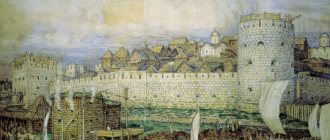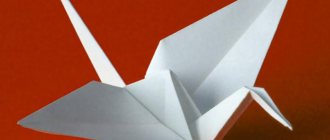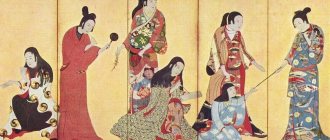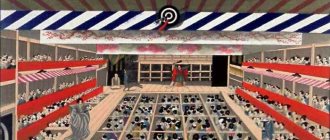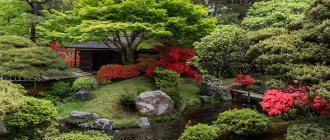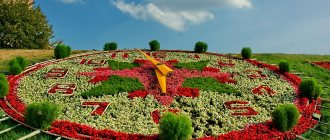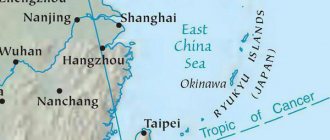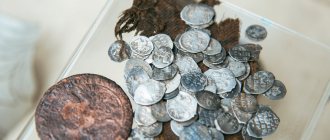Today we are already accustomed to the existing variety of martial arts styles of different nations. There are dozens of karate styles alone.
But even by historical standards, very recently, at the very beginning of the twentieth century, few people knew about karate in the form in which we know it, even in Japan. The history of the origin of karate, on the one hand, is interesting for its events and bright personalities, on the other hand, it is quite contradictory and surrounded by myths.
I asked several of my friends, people far from sports, a simple question: where did karate come from? Of course, from Japan, they answered me. Their answer was quite predictable, but it cannot be said that it was completely accurate.
The answer to the question about the origin of karate should be sought in direct connection with the historical and geographical events of the past several centuries in Asia.
There is an opinion that karate, in its spiritual and technical components, is rooted in the history of Japanese samurai, moreover, the Japanese themselves actively support this point of view. As for the warrior spirit, there is no doubt about heredity, but with regard to the technical aspects of karate, not everything is so obvious.
Warrior spirit as a factor in the emergence of karate
Moving ten centuries into the past, we can notice the emergence and strengthening of Japanese professional warriors - the samurai. Our imagination immediately draws us a picture of a stern, unemotional and certainly noble warrior and, at the same time, a sophisticated connoisseur of the arts. In a word - a knight, in the modern sense of the word. And indeed, oddly enough, the knights of Europe during the Crusades and the samurai had a lot in common. And this commonality was by no means in their refined image of our days.
So, in the period of the 11th-13th centuries AD, European knights did not disdain robberies, and did not disdain to organize sea pirate raids in the Mediterranean. They brutally dealt with the population of defeated cities on the way to Palestine during numerous crusades. A striking example of the typical “knightly” behavior of those times was Renaud de Chatillon, whose knights during the second and third crusades raged on the caravan routes of Jerusalem and Damascus and sea routes in the Crete region.
But the samurai also had something to surprise even the most notorious knights. As you know, samurai from childhood were brought up in the tradition of contempt for death, both their own and that of others. This could not but leave an imprint on their worldview. They had a wild custom from a European point of view - tameshigiri - a samurai had the right to test a new sword on a passer-by he accidentally met.
In general, Japanese and European warriors were not known for their desire to keep their word, loyalty for them was a matter of profit, and mercy was often considered excessive softness. But with all this, these were professional soldiers who did not hesitate to accept the risk of the chosen path. Such determination partly explains where many people came from who wanted to idealize and imitate them.
Even the period of decline of the power of knights and samurai occurred, although in different periods, but approximately according to the same scenario. At first, they weakened due to the strengthening and centralization of state power, the creation of regular government troops, and the beginning of the mass use of firearms. And then, both of them became isolated in the form of a class of untitled nobility, began to actively try to “forget” treachery and betrayal, and began to cultivate an aura of nobility and impeccability.
By the beginning of the twentieth century, the samurai class was seriously limited in rights and opportunities. In this regard, a demand for a military national-patriotic idea was formed in Japanese society. The popularizers of karate were able to take advantage of the situation by playing on the positive image of samurai and their ancient traditions, which had already been cultivated by that time in Japan. At the same time, the continuity of the military spirit became one of the main factors that made it possible to achieve recognition of karate at the state level. Which in turn ensured its popularity.
Penalties
The rules of karate-do provide the following system of punishments:
- “Chukoku” is the first remark, which is not accompanied by punishment. It is mainly issued for minor violations or for unintentional violation of the rules.
- “Keikoku” is a type of reprimand that can be accompanied by punishment. This remark is made by the referee and is accompanied by a gesture in the form of the index finger lowered at an angle of 45˚ towards the participant who violated the rules. If a penalty is issued, half a point (wazaari) is deducted from the offender, which is subsequently awarded to his opponent.
- “Hansoku” is a type of reprimand that is issued for a serious violation. The main penalty in this case is the deduction of one point from the offender and its award to the opponent. A more severe measure may be the disqualification of the offending fighter from the fight.
- “Shikkaku” is the removal (disqualification) of an athlete from participating in a competition.
The punishment system in karate-do is built on the principle of increasing the severity of sanctions. For example, if an athlete was previously deducted half a point, then if they violate it again, they may lose a whole point (or be completely suspended from participation in competitions).
Origin of the technical aspect of karate
The second no less important factor in the emergence of karate as a type of martial arts can be considered a set of technical techniques and methods for training fighters that determine its characteristic features.
Can't you just come up with karate?
By the time of state recognition of this direction of martial arts in Japan, karate de facto already represented an integral system. But in order to become one, the technical arsenal of strikes and throws, as well as the methodology for teaching them, had to go through a very long journey in selecting the most effective techniques, in developing the best teaching methods. In the absence of a global information network, this period of time could be measured in more than one century. So how was the basis of this martial art formed and where did the equipment “test” take place?
Japanese version of the origin of the technique
The highest layer of samurai - daimyo - maintained their own military schools, where they taught a variety of applied areas, such as fighting with halberds, swords of various types and lengths, poles and clubs, tridents and pitchforks. They studied archery, the art of fighting on horseback, swimming, the art of tactics and military management and some other, more specific areas.
The trained samurai was a very formidable fighting unit, a kind of special forces of the past, masterfully wielding all types of weapons of that time. And for him, fighting without weapons was the most extreme and impractical means.
However, the technique that the karate masters showed required many years of hard training. It is unlikely that samurai could afford to spend a lot of time training only in fist fighting. Such a variety of types of weapons required the warrior to devote considerable time to even simple basic acquaintance with them, not to mention the highest levels of skill.
The samurai was absorbed in the study of combat with weapons in his hands and, it can be assumed, that he would hardly have become the source of the emergence of karate as an effective and integral system of training in fist fighting.
But if the samurai had no time to develop fist martial art, then most likely someone did it for them. Japan's neighboring countries will help you get a hint.
Neighbor's influence
Most sources indicate that Japanese karate came to Japan from Okinawa, Japan, at the end of the 19th century. But how and when this art originated on the island is in most cases not explained. The earliest references to the heyday of karate in Okinawa date back to the 18th century. This is generally understandable, since Okinawa has been a vassal state of China since the 14th century, and became part of Japan only at the end of the 19th century.
A hint that karate originates from China can be obtained by studying the origin of the word karate.
Being dependent on China, technical elements of military wushu penetrated into Okinawa. On the island they were called “tode” (“karate” if you read the same hieroglyphs differently), which translated meant “hand of the Tang dynasty.” It was the second version of the reading that took hold in Okinawa and began to designate fist martial art, clearly indicating the country of origin of karate. But in the 20s of the twentieth century, for political reasons and in order to obtain government support for the development of this martial art, the hieroglyph “kara”, meaning “Chinese”, was artificially replaced with a homophone hieroglyph meaning “empty”. The result of the replacement was the old name “karate” with a new meaning: “empty hand”.
Another reference to China was the spread of the term “kempo”, borrowed from Japan, which is a literal translation of the Chinese “quanfa” - methods of fist fighting.
China exerted a strong influence on Okinawa, and also indirectly on all of Japan. At that time there was a fashion associated with everything Chinese. It got to the point that the Okinawan authorities allocated the most talented and educated people to undergo training in China. And from China, instructors in science, literature, calligraphy, and religious philosophy came to Okinawa and Japan.
This fashion did not bypass martial arts.
Chinese origins of karate technique
If you take a closer look at the set of technical and methodological practices adopted in karate, you can clearly see their similarity with the applied areas of Chinese wushu.
In karate, there are three main areas of fighter training:
- Practicing formal complexes and methods of their combat use (kata and kihon)
- Fights in full contact or with its limitations (kumite)
- Special methods of psycho-emotional training
All these three directions have been and are the basis of any style of wushu since ancient times. The most important from the point of view of Chinese Wushu is the third direction. Several hours a day were devoted to these training methods, and the wushu practices themselves were considered primarily not as a set of technical techniques, but as a way of spiritual self-improvement and had a special personal character of the fighter’s experience. This group of training techniques included numerous techniques of psychoregulation, meditative and breathing practices, methods of concentration of consciousness and control of internal energy.
However, due to the fact that Chinese Wushu schools were traditionally closed, special training methods reached Japan in a greatly reduced form. Long-term psycho-emotional wushu practices were transformed into ritual meditations lasting several minutes at the beginning and end of training.
Active Japanese understood the importance of the psycho-emotional component. And they came up with a way out. Emphasis was placed on formal complexes. Having direct analogues in China, the Kanku-dai, Bassai-dai, Seisan, Sanjuroku, breathing kata Sanchin and Tensho were carefully studied and practiced. Kata became a form of active meditation in karate.
When adapting the Chinese martial art, the Japanese also reworked the approach to free combat (in Chinese Wushu, full contact sanda is one of the elements of martial art training), initially eliminating jiu-kumite from the arsenal of training exercises, focusing on the concept of a single crushing blow. But at later stages, free combat returned to karate, fundamentally dividing the martial art into two movements: those who practice ju-kumite and those who adhere to the philosophy of one decisive blow.
Kyokushinkai
The founder M. Oyama, Korean by origin, was born in 1923. This style is the most famous in the world. He studied Chinese and Korean martial arts styles before moving to Japan. Here he studied for a short time with Gichin Funakoshi and Goju-ryu with the Korean instructor Peichi So.
Oyama was dissatisfied with the effectiveness of the combat systems he was working on. He retired to the mountains, where he trained intensively for a year and a half. He later toured the United States, where he sparred with boxers, professional wrestlers and street fighters; not content with that, he acted as a bullfighter of sorts in bullfighting, killing three and breaking the horns of others. He began teaching karate in 1946 and created his own system in 1956.
Kyokushinkai means "extremely truthful style." The emphasis is more on combat effectiveness than on the health aspect or moral development.
At first, Oyama included kata from Shotokan and Goju Ryu. But in the 60s and 70s, the role of kata fell and the technique, as well as training methods, began to resemble Thai boxing. They compete according to the rules that Oyama introduced: No punches to the face, no punches to the groin, no attacks to the joints.
Not all instructors agreed with Oyama; from their point of view, the style began to turn into a type of “kickboxing”. Oyama himself spoke about the degeneration of Japanese and Okinawan karate styles, calling them “karate dancing”. In the 50s, M. Oyama repeatedly challenged leading karate instructors to a duel, however, no one dared to answer the challenge.
Kyokushin training is rigorous and requires a high level of physical fitness. The development of fighting spirit is encouraged and tested frequently. One of the most severe exams is called "100 Kumite", which means you have to fight 100 times against a large range of opponents. Kyokushin is characterized by structural unity; it is rare for groups of instructors to leave the Federation, forming independent clubs or associations.
Federation
There are several large organizations on the world stage involved in the development of karate-do as a martial art.
JKA (Japan Karate Association). The organization was founded in 1948 and is considered one of the leading organizations in the world. Its members are about 130 states. The Association organizes and conducts the most prestigious World Karate Championship - the Funakoshi Gichin Cup. The event takes place every three years, and the location of the Championship is constantly changing.
JKS Russia (National Karate Association). The organization operates on the territory of the Russian Federation and is the official representative of the international organization NPO “Japan karate Shoto Federation” (JKS). Key objectives of the association:
- attracting Russian citizens to sports;
- formation of a healthy lifestyle among the country's population;
- patriotic education of youth.
Athletes of the association regularly take part in various championships at both local and international levels, for example, the World and European Karate Championships. In addition, JKS Russia annually organizes internships for members of the association in Japan.
JSKA (Japan Shotokan Karate Association). The organization was founded in 1999 by Keigo Abe. It is worth noting that Abe was not only a student of Nakayama, a graduate instructor of the Japan Karate Association, but also held leadership positions in the JKA for some time.
Sports equipment
Participants and members of the panel of judges must wear a special uniform of the established pattern.
The equipment of judges and referees includes the following elements:
- a dark blue jacket with gold buttons along the sides;
- white long or short sleeve shirt;
- tie;
- classic trousers without cuffs, light gray.
The sports uniform of the participants consists of:
- The jacket is white. Advertising on clothing is prohibited. It is permissible to use the logo of a clothing manufacturer, and then only in specially designated places. For example, on a jacket - in the lower right corner, on trousers - on the belt. The length of the jacket should cover the thigh, but not less than ¾ of the total length of the thigh. The length of the sleeve in the classic version of the jacket should reach the level of the wrist, and in the summer versions of the uniform it should be no shorter than the middle of the forearm. During a fight, athletes are not allowed to roll up their sleeves.
- The trousers are white. The normal length of trousers is the one at which they cover ⅔ of the lower leg.
- A white short-sleeve T-shirt is used only by girls.
- Belt. The athlete's skill level is determined by its color scheme.
- Mouth guard.
- The chest protector is only allowed for use by women.
- A shell that protects the athlete’s groin area from serious injury.
The rules of karate-do prohibit the use of:
- rings;
- chains;
- ankle protectors;
- metal hairpins;
- glasses (it is allowed to use contact lenses if necessary).
When receiving admission to competitions, participants must have their nails checked for length and head cleanliness. If the referee considers that these parameters do not meet the established standards and could harm the opponent, then the fighter is not allowed to participate in the competition. In addition, the rules of karate-do allow athletes to use religious items, such as amulets. However, participants wishing to perform with them must obtain permission from the judging committee in advance.
Educational publications
There are many textbooks dedicated to learning karate-do. Common publications for Russian-speaking readers include the following books:
- "Shotokan Karate-do: 27 kata in diagrams and drawings for certification and competitions." The author of the book, Albert Pfluger, being a representative of the Japanese Karate Association, answered most of the questions that followers of karate-do might have while studying the discipline. The manual covers the history of the development of martial arts quite extensively and provides detailed recommendations on the methods of conducting classes. The main advantage of the publication is the illustrative material, which allows the reader to easily learn how to perform even the most complex kata.
- “Secrets of Karate-do”, authored by V. E. Dashchinsky. The publication is a practical guide to karate, which will be of interest not only to beginners, but also to teachers. The book presents theoretical and practical fundamentals of kata techniques. In addition, the book outlines certification requirements and competition rules. All material is accompanied by illustrations.
- “Karate-do” by Sergei Lapshin. The manual covers in detail the history of the emergence and development of martial art, clothing requirements, ethical standards, competition rules and much more.
All presented literature is freely available on the Internet, and is also not uncommon in bookstores.
